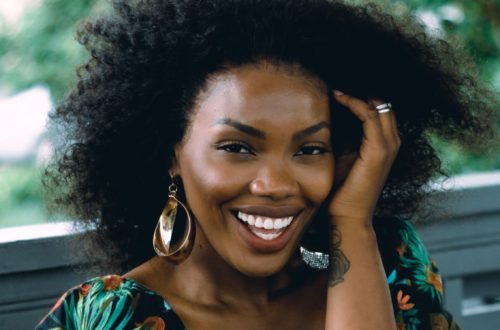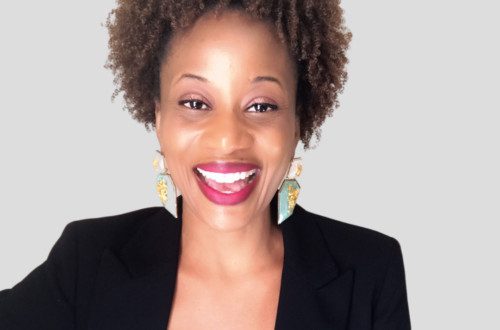
It Feels Good: Surface texture and Density, Getting to Know Your Natural Hair
Knowing your hair can greatly change your expectations when it comes to your desired styles, “hair goals”, and overall pleasure with your natural hair. Often times we are too focused on achieving a look or style that is ultimately incompatible with the key characteristics of our hair. This can lead to severe disappointment and a serious waste of time and money. If you feel like this might be you, no worries. We’ve all been there. After much disappointment, and a few big chops, I have learned that knowing my hair characteristics and tailoring a routine that fits my hair care needs helps me to better appreciate my hair and achieve the healthy natural hair that I desire.
This week we are continuing to look at some key hair characteristic that can help you tailor a regimen that meets your needs and has you well on you journey to achieving healthy natural hair.
Surface Texture
Not to be confused with texture (the width or diameter of the hair strand), surface texture is the overall look and feel of the outer cuticle layer of the hair strand. Surface textures can be classified as thready, wiry/coarse, cottony, spongy, or silky. Your hair’s surface texture also determines if your hair will have a shine or sheen. Smoother textures have more of a shine and more textured hair has a sheen or dull reflection of light.
Quick Tip sheen vs. shine: If your hair is not shiny that’s ok. Depending on your surface texture your strands may not be designed to be shiny. Silky surface textures reflect light more easily giving them a shine (think high gloss). Highly textured hair is less able to reflect light resulting in more of a sheen (think matte finish or scattered shine). How “shiny” your hair is, is not necessarily a reflection of its health.
Thready – Hair has a low sheen, with high shine if the hair is held taut (as in a braid), with low frizz. Wets easily but water dries out quickly.
Wiry/coarse – Hair has a sparkly sheen, with low shine and low frizz. Water beads up or bounces off the hair strands. Hair never seems to get fully wet.
Cottony – Hair has a low sheen, a high shine if the hair is held taut and has high frizz. Absorbs water quickly but does not get thoroughly wet very fast.
Spongy – Hair has a high sheen with low shine with a compacted looking frizz. Absorbs water before it gets thoroughly wet.
Silky – Hair has low sheen, a very high shine, with a lot or low frizz. Easily wets in water.
Density
The density of your hair has nothing to do with the texture of your hair, but refers to the number of strands per square inch of your scalp. On the average, every person has approximately 2,200 strands of hair per square inch and has a total of 100,000 hairs. Hair density is classified as thin/low, medium, and thick/high with thin referring to the number of hairs present and not the diameter of the individual hair strands.
Quick Tip Determining Your Hair’s Density: The easiest way to assess density is by looking at your dry hair as it hangs loose. If your scalp is easily visible without moving the hair, then your density is most likely thin. If it is difficult to see your scalp even when the hair is parted then, your density is most likely thick. Medium density falls between the two extremes requiring minimal manipulation to see the scalp.
Why it Matters
Learning your hair’s surface texture can help you set realistic expectations when it comes to the overall look and feel of your hair. For instance, acknowledging that I don’t have a silky surface texture helps me to be more realistic about the presence of a shine in my hair, it lets me know that I can’t only rely on visual assessments to determine the health of my hair, and I can better appreciate how my hair feels once it is properly cleansed.
Knowing your hair’s density aides in determining which styles and products would be right for you. Knowing that I have medium to low density hair means that heavier products (oils, creams, butters) may weigh my hair down, twist outs or alternative styles that require a lot of manipulation will cause my hair to look less dense. As a result, my go to style is a wash and go because it is a great option if I want my hair to look full and dense.
Taking the time to learn your hair and applying that knowledge makes a great difference when it comes to hair care success and the overall pleasure you will have with your natural hair. Consider these pearls as you continue on your healthy hair journey and until next week, Go BOLDLY!
References
- https://www.earthtonesnaturals.com/blogs/all-about-your-hair/17167004-hair-typing-systems
- The Science of Black Hair: A Comprehensive Guide to Textured Hair Care (Standard Edition: Black & White)
- Wash Your Damn Hair: Simple Haircare and Styling to Help You reach Your Hair Goals





3 Comments
S.Carter
Thanks for sharing this! It’s so easy to have unrealistic goals pertaining to our hair, and what styles work best. I had to realize that twist outs are too “flat” and don’t ever really get me the look I’m “going for” b/c of my mostly LOW density hair, and no amount of product combination will really get me there!
Keep bringing us great information and educating the masses!
These weekly posts are spot on!
kristal
Thank you for you comment. I had to come to the same realization about my hair. Some styles just aren’t suited for my hair and that’s ok. Knowing this I can focus on mastering the ones that are and save myself a lot of frustrations. I am glad that you are enjoying the content I, greatly appreciate the feedback and encouragement.
Pingback: